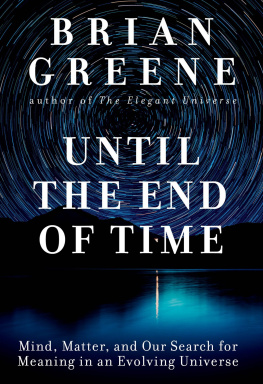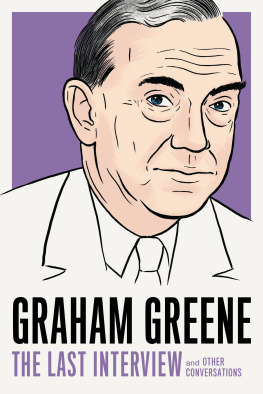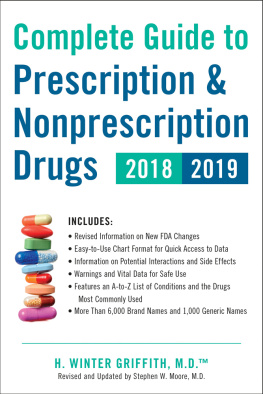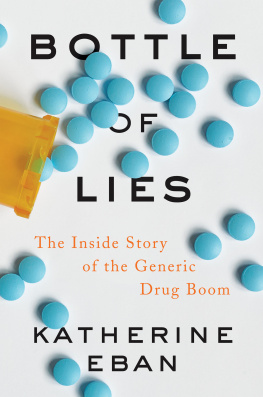GENERIC
GENERIC
THE UNBRANDING
OF MODERN MEDICINE
JEREMY A. GREENE

2014 Johns Hopkins University Press
All rights reserved. Published 2014
Printed in the United States of America on acid-free paper
9 8 7 6 5 4 3 2
Johns Hopkins University Press
2715 North Charles Street
Baltimore, Maryland 21218-4363
www.press.jhu.edu
Library of Congress Cataloging-in-Publication Data
Greene, Jeremy A., 1974 author.
Generic : the unbranding of modern medicine / Jeremy A. Greene.
p. ; cm.
Includes bibliographical references and index.
ISBN-13: 978-1-4214-1493-5 (hardcover : alk. paper)
ISBN-10: 1-4214-1493-7 (hardcover : alk. paper)
ISBN-13: 978-1-4214-1494-2 (electronic)
ISBN-10: 1-4214-1494-5 (electronic)
I. Title.
[DNLM: 1. Drugs, Generichistory. 2. Drug Industryhistory. 3. History, 20th Century. 4. History, 21st Century. QV 11.1]
RM301
615.1dc23 2013048851
A catalog record for this book is available from the British Library.
Special discounts are available for bulk purchases of this book. For more information, please contact Special Sales at 410-516-6936 or .
Johns Hopkins University Press uses environmentally friendly book materials, including recycled text paper that is composed of at least 30 percent post-consumer waste, whenever possible.
To Allan
CONTENTS
ACKNOWLEDGMENTS
This book is dedicated to Allan Brandt, an incomparable mentor, teacher, colleague, and friend. It was Allan who introduced me to the vitality of the field of medical history and the joys of mapping a career at the intersection of clinical practice and historical scholarship. As I have researched and assembled the content of this volume, I have witnessed Allan continue to climb one Everest after another: he remains a uniquely self-actualized scholar and a singular human being.
In the decade or so that I have spent as a scholar of generics, I have accumulated many specific intellectual debts, not all of which can be contained in these acknowledgments. I would like to thank my editor at Johns Hopkins University Press, Jacqueline Wehmueller, who combines a graceful editorial style with remarkable efficiency, as well as the anonymous reader for the Press. Several individuals provided comments on chapter drafts, including G. Caleb Alexander, Chad Black, Bob Bohrer, Marilena Correa, Joseph Gabriel, David Herzberg, David Jones, Aaron Kesselheim, John Kuczwara, Ilana Lwy, Victor Manuel Garcia, Kris Peterson, Anne Pollock, Kaushik Sunder Rajan, Alisha Rankin, Charles Rosenberg, John Swann, Ulrike Thoms, Daniel Todes, and Nancy Tomes. Particular thanks to Rebecca Lemov, Deborah Levine, Scott Podolsky, and Sophia Roosth for repeated deep dives into the material. Thanks also to Carolyn Acker, Susan Bell, Joo Biehl, Alberto Cambrosio, Angela Creager, Christopher Crenner, Joe Dumit, Jonathan Erlen, Jean-Paul Gaudilliere, Michael Gordin, Nathan Greenslit, Anita Hardon, Lynn Hsu, Margaret Humphreys, Evan Hepler-Smith, Greg Higby, Suzanne White Junod, Nick King, Howard Kushner, Richard Laing, Andrew Lakoff, Julie Livingston, Anne Kveim Lie, Neil and Lisa Martin, Bjarke Oxalund, Stephen Pemberton, Adriana Petryna, Joanna Radin, Peter Redfield, Susan Reverby, Samuel Roberts, Paul Sherman, Susan Strasser, Dominique Tobbell, Elly Truitt, Kiichiro Tsutani, John Harley Warner, Ayo Wahlberg, Keith Wailoo, Elizabeth Watkins, George Weisz, and Susan Reynolds Whyte for helpful conversations along the way. Early legwork on this project included a failed collaborative grant application with Cori Hayden; though we did not receive funding for our joint project, I gained a heightened appreciation for the value of articulating historical and ethnographic investigations of a mutual subject.
Early drafts of most chapters were presented at a number of conferences and colloquia, including the meetings of the American Association for the History of Medicine, the American Institute of the History of Pharmacy, the History of Science Society, the Organization of American Historians, and the American Studies Association, as well as invited lectures at Bowdoin College, California Western School of Law, Duke University, Emory University, Georgia Tech, Harvard Law School, Princeton University, the University of Albany, the University of Copenhagen, the University of IllinoisChicago, the University of Oslo, the University of Pennsylvania, the University of Pittsburgh, the University of Rochester, and the University of Utrecht. Particular thanks go to the architects of the ESF Drugs Network conference series, especially Christian Bonah, Sophie Chauveau, Flurin Condrau, Jean-Paul Gaudilliere, Christoph Gradmann, Volker Hess, Ilana Lowy, Toine Pieters, Jonathan Simon, Ulrike Thoms, Carsten Timmerman, and Mick Worboys. An early sketch of the project was published in the Journal of the History of Medicine and Allied Sciences, and ancillary ideas were developed along the way in short publications in the Lancet, the New England Journal of Medicine, and History & Technology.
Early work on this project was supported by pilot funding from a Ewing Marion Kaufmann Junior Faculty Fellowship in Entrepreneurship Research and a Larry J. Hackman Research Residency from the New York State Archives. The larger research endeavor was made possible with key funding from a Scholars Award in Science and Technology Studies from the National Science Foundation. Subsequent support from the National Library of Medicine helped transform the research into a publishable book. I would like to thank Mateo Munoz, Emily Harrison, Oriana Walker, Kirsten Moore, Anita Dam, and Max Lloyd for their assistance with research. Thanks also to Bill Davis and Richard McCulley at the National Archives; to Stephen Greenberg and Mike Sappol at the National Library of Medicine; to Greg Higby and Elaine Stroud at the American Institute of the History of Pharmacy; to George Griffenhagen at the American Pharmaceutical Association; to John Swann and Suzanne Junod and the Freedom of Information Act officers at the Food and Drug Administration; to Marie Villemin at the World Health Organization Archives; and to Kathryn Baker and Jack Eckert at the Center for the History of Medicine at the Countway Medical Library, as well as the archivists at the American Medical Association, the University of California San Francisco, the University of California San Diego, the Chemical Heritage Foundation, and the New York State Archives. William Haddad, Alfred Engelberg, and Richard Burack provided access to personal archival materials and granted extensive interviews with the author.
This book owes its existence in no small part to Jerry Avorn, whose Division of Pharmacoepidemiology and Pharmacoeconomics (DoPE) at the Brigham and Womens Hospital has become a thriving center for interdisciplinary research on the role of pharmaceuticals in American society. Jerrys vision for the field communicates a deep and abiding sense that historical analysis can and should inform contemporary research into pharmaceutical policy and epidemiology, and I benefitted immeasurably from being an active member of his faculty. I particularly enjoyed the many long conversations and collaborations with fellow DoPErs Jennifer Polinski, Aaron Kesselheim, Niteesh Choudhry, Joshua Gagne, Michael Fischer, Sebastian Schneeweiss, and Will Shrank, and the research assistance of Mary Peterson and Uzaib Saya. In my new life at Johns Hopkins, I have likewise benefitted from conversations with fellow faculty members in the Center for Drug Safety and Effectiveness, especially G. Caleb Alexander, Kay Dickersin, Janet Holbrook, Tianjing Li, Brent Petty, Jodi Segal, and Sonal Singh. My work has also depended on close conversations with clinical colleagues, from Asaf Bitton, Andrew Ellner, Pracha Eamranond, Michael McWilliams, Jamie Redgrave, Gordy Schiff, Lori Tishler and the staff of the Brigham Internal Medical Associates, to Mike Albert, David Dowdy, and Sadie Peters and the staff of the East Baltimore Medical Center. Supportive and enlightened chairs of medicine, from Joseph Loscalzo at the Brigham & Womens Hospital to Myron Weisfeldt and Jeanne Clark at the Johns Hopkins School of Medicine, have likewise provided essential support for my continued career as a clinician-historian.
Next page










